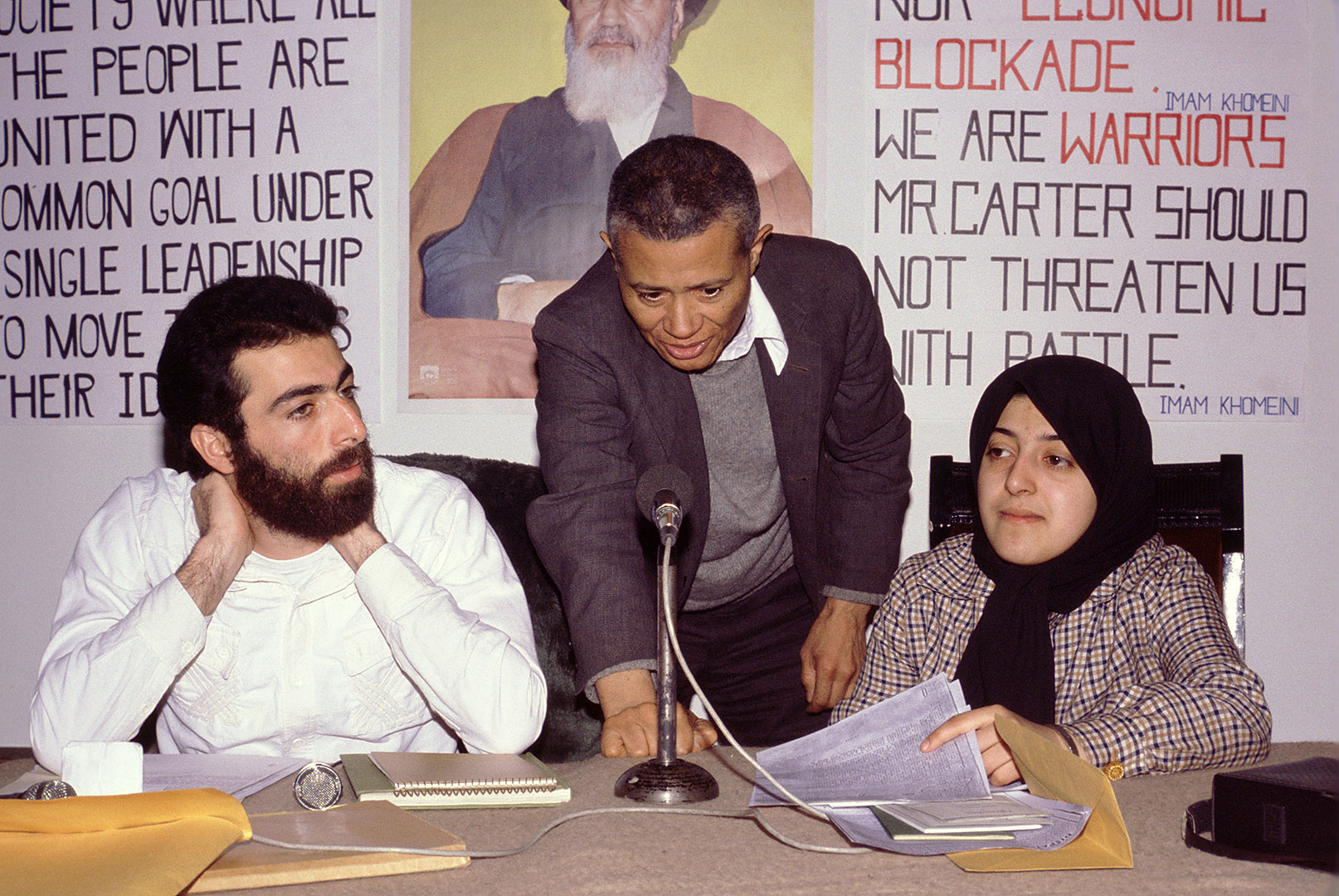
From 1945 to 1989, the border between East and West Germany was a painful site, a physical manifestation of the Iron Curtain that divided capitalist and communist Europe during the Cold War.
Soviet-dominated East Germany heavily fortified its side of the border with fences, guard towers, and land mines. Entire villages were forcibly removed from the border, and hundreds of people died trying to cross to West Germany.
The militarization of the 866-mile border had an unintended consequence: Because it had been emptied of human habitation, the meters-wide border strip became a safe haven for more than 1,200 rare plant and animal species, including wild cats, otters, and orchids.

Associate Professor of Environmental Studies Sonja Pieck is studying the Green Belt, the once-militarized border that separated the former East and West Germany. (Phyllis Graber Jensen/Bates College)
Sonja Pieck, an associate professor of environmental studies at Bates, has spent several years studying this unique product of history and nature.
When the border opened and Germany subsequently reunited, environmental groups jumped at the chance to conserve what came to be called the Green Belt, part of a continent-wide effort to create nature preserves at Cold War-era borderlands.
In some areas, the German conservationists succeeded. In 2018, the state of Thuringia declared its section of the Green Belt a National Nature Monument, recognizing its importance as both a historical and an environmental site.
As the 30th anniversary of the opening of the border approaches, Pieck has traveled to the Green Belt numerous times, examining policies and promotional materials and talking to conservationists and people who live near the former border. She is writing a book on the history of the conservation project, the connection between nature and memory, and the role of nature in German national identity.
Pieck, who recently published an article about the Green Belt in Cultural Geographies, spoke with us about the importance of the Belt to German identity, and what the stories we tell about the former border leave out.
How did you become interested in the Green Belt?
I’m originally from Germany. My mother was born in Berlin right before the war, and as the war ended they fled the Red Army and made it out of the East just in time.
I was born in West Germany and grew up with very little knowledge of the German Democratic Republic [East Germany]. It was considered basically to be a foreign country. I had never seen the border.
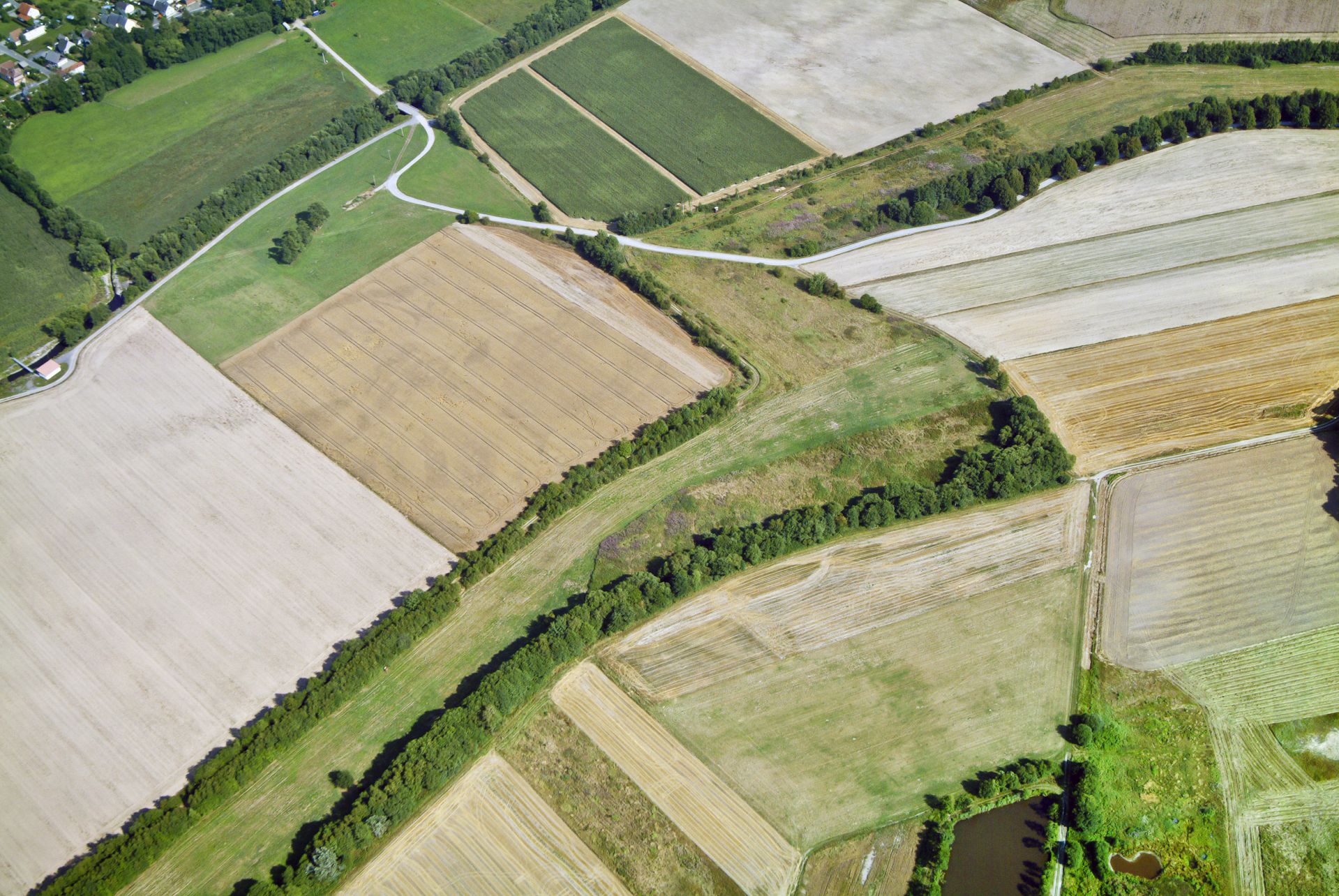
Running from lower left to upper right, this section of the German Green Belt, between the states of Bavaria and Thuringia, is starkly visible against sections of farmland. (Wikimedia Commons)
When the wall came down, I was astonished at how emotional everybody was. I couldn’t get a real, felt sense of the border crashing down. It’s always been a blind spot in my education, and it’s always irritated me. I was not taught any of this history. If we focused on the postwar history, it was the economic miracle of West Germany, not what was happening in the East.
Now the idea of the Green Belt is affective. I have a real emotional response to it. It’s something that was — as the general narrative paints it — a “death strip,” and now it’s become a “lifeline.”
I realize that this is a simplified narrative, but I’m taken by the notion that a space where you can still see gravestones and memorial markers becomes something that gives non-human life a chance in a country that has not left a lot of room for that. It’s something that makes me hopeful.
What’s it like to visit the Green Belt?
The Green Belt looks so different in different places, and not all of it is even visible as such. You might be in a wooded area, and somebody tells you, “Actually, we’re about 20 feet from where the minefield is, so don’t step over there because there might be some stuff still in the ground.” You want to go with people who know where you are.
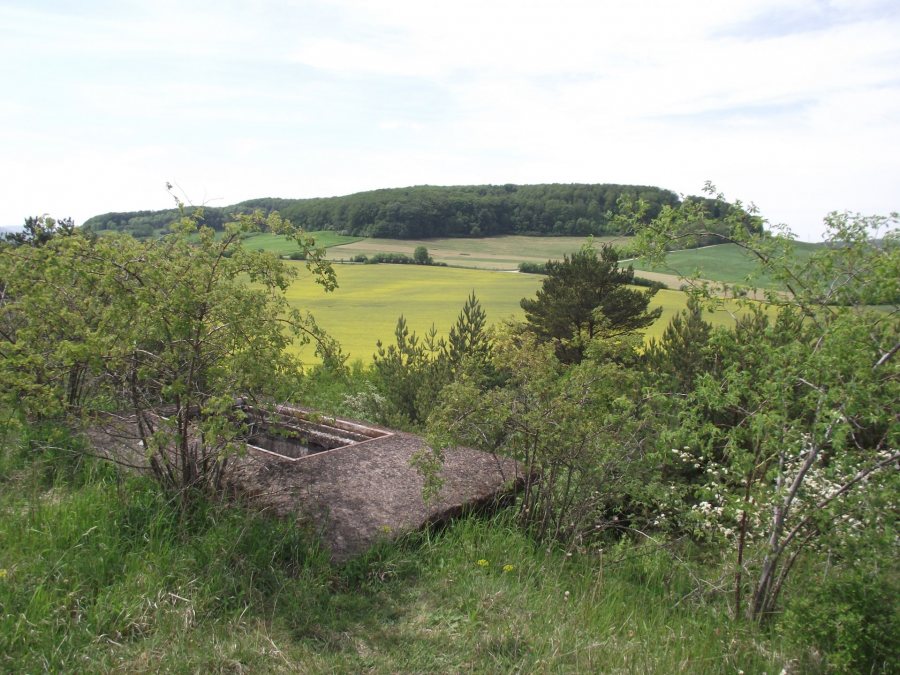
When Associate Professor of Environmental Studies Sonja Pieck visited the Green Belt, she saw remnants of the old militarized border, such as this sniper hideout. (Courtesy of Sonja Pieck)
You walk on the old patrol road, which is these concrete slabs, and you know there were GDR border guards there back in the 1980s. In many cases all of the fencing has been removed — you get occasionally a watch tower, but it’s sometimes really hard to imagine that just 30 years ago, this was an active militarized zone.
Beyond that, if you take binoculars with you, if you pay a little bit of attention, if you pause, if you listen — between the cranes and the sea eagles and the otters — it’s quite something. It’s been a lot of fun to be out there. You can ride your bicycle, you can go hiking. The Green Belt also crosses waterways, so you can go canoeing. Some people will go horseback riding.
The Green Belt advocates are trying to make it a touristic sort of experience that merges biodiversity with memory. To what extent are they successful? They’re trying — some of the signage is amazingly good where that merging happens.
Why is the Green Belt controversial?
This conservation project is the same space where hundreds of people were killed trying to escape East Germany. The border space is evocative of trauma and loss and repression, so it’s a complicated one to protect.
The conservationists who want to do so run up against people who want any kind of trace of the border gone — a Green Belt is still a boundary line of some kind, and they don’t want that there.
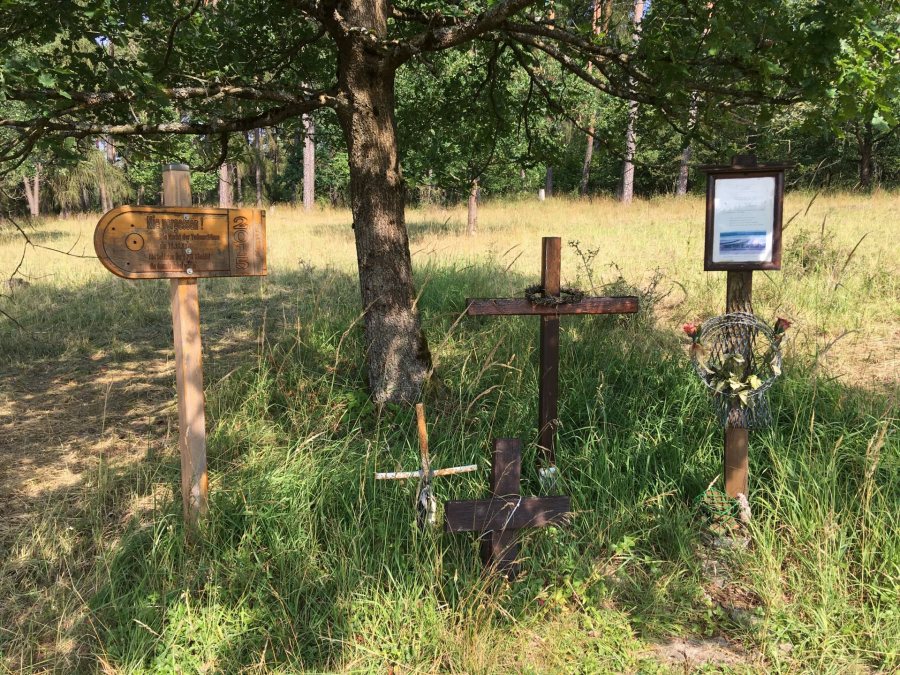
Many Germans believe a nature preserve is an appropriate way to memorialize those who died trying to cross the inner German border; others want any trace of a border removed. (Courtesy of Sonja Pieck)
Others are totally in favor, because what better way to memorialize the people who died than by creating a living legacy to them?
The Green Belt is something that its advocates say should be used, should be seen, should be traveled through, should be felt. It’s a memorial to the partition, it’s a memorial to what has happened, to our history. It’s trying to merge biodiversity goals with living memory.
Then there are farmers whose lands were expropriated when the border was created, both in the East and the West, who don’t like this conservation project now occupying spaces that were family lands. There are multiple things happening here. It’s a very interesting space to research.
What stories do conservationists tell about the National Nature Monument in Thuringia?
One narrative is that the border space was crafted by the GDR border police. Meadows were cut and mowed, and there were minefields in place — but the ecological resurgence is an accident of that. It was not a policy. Nobody tried to bring in species; they came anyway. So the storyline is one of ecological rebirth in the face of war and state violence.
The other narrative is about rurality. The Green Belt runs almost entirely through rural backwaters, and they’re backwaters because the border was there, and because the villages and people were removed.
There are areas that are actually quite impoverished, again in part because of the partition. As the narrative goes, traditional forms of land management like sheep herding or traditional small-scale farming are still in place. That is partly true.
Whose voices do the stories leave out?
The largest resistance to the Green Belt tends to come from property owners who lost land to the partition, or farmers who are renting the property from others and who see that their farming activities are threatened by conservation.
They don’t like the usage restrictions that come with conservation — they’re worried that, for instance, you can’t rehabilitate a wetland right next to your field. It doesn’t matter if you technically own that field, that field is now lost to you because you need it drained in order to produce anything.
“The big slogan of the Green Belt is ‘Borders separate, nature unites.’ Ironically, the Green Belt creates a lot of the division.”
Farming does not generate a lot of profit. A lot of farmers are hard up against it, and when something comes that threatens people’s livelihoods, that’s a problem.
The conflict is so polarized between conservation and agriculture that there’s very little effective conversation between the two sides. Farmers, many of whom use industrialized methodology because every market incentive tells them to, feel completely unrecognized by conservation.
The big slogan of the Green Belt is “Borders separate, nature unites.” Ironically, the Green Belt creates a lot of the division too. The divisiveness among conservationists and agriculture is getting deeper in a way that doesn’t benefit anybody.
What would a more just or inclusive story about the Green Belt look like?
Right now the Green Belt has some really effective signage that talks about resurgent nature. We have very evocative language around the suffering that people have had to endure, people who lost their lives, people who lost their land, people with the harrowing escape stories, people who made it. Those stories are effectively done.
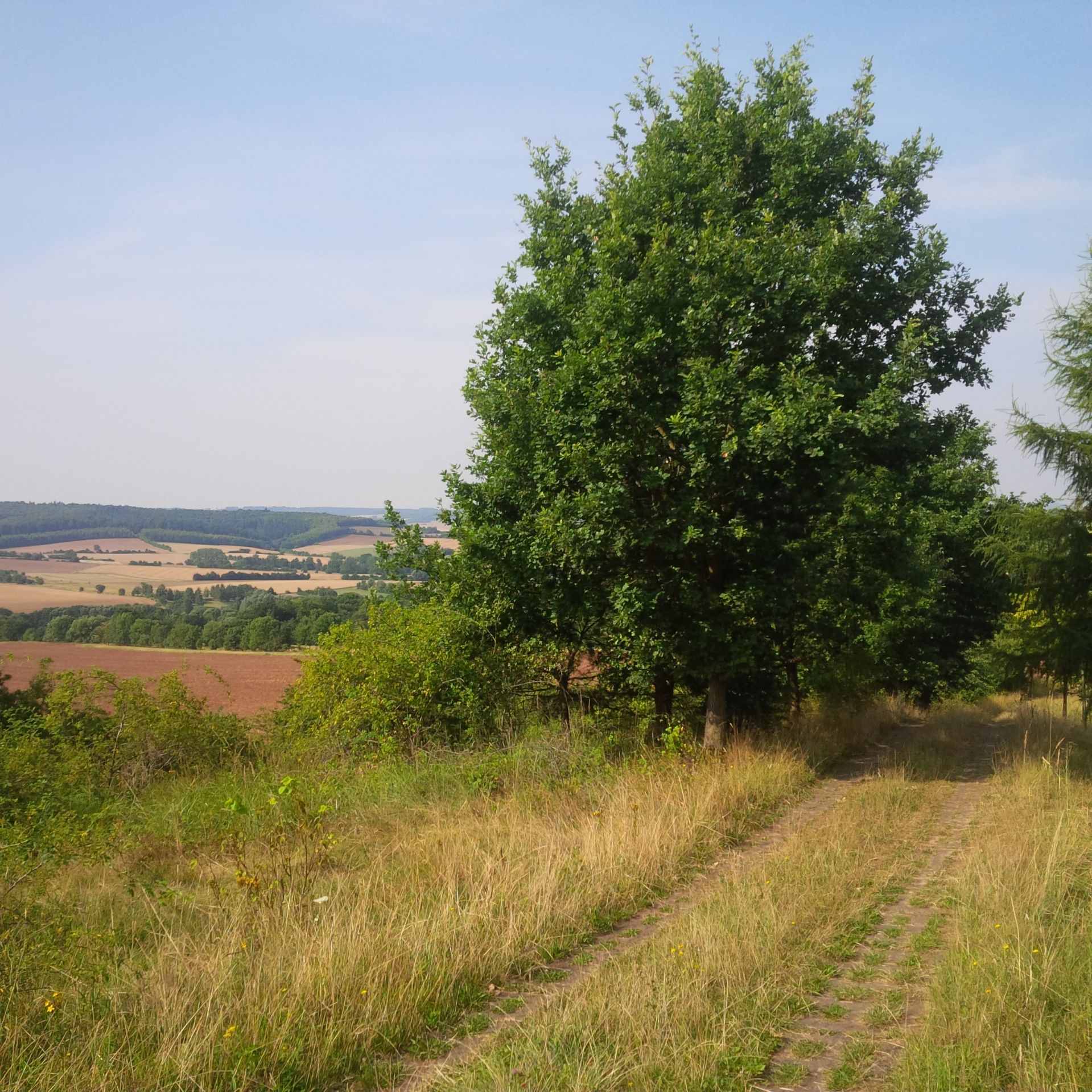
While many elements of the border have been dismantled, patrol roads still run through much of the Green Belt. (Courtesy of Sonja Pieck)
A more-just discourse would talk about what farming looks like today and what the pressures on the farmers are. It would say that farmers have in fact also lost land, and they lost land to the Green Belt, and they made concessions to make the Green Belt what it is.
There seems to be a very strong anti-agriculture bias among environmentalists — which I think is understandable, but to render invisible people who have sacrificed is not productive.
There’s also an anti-state feeling in the East, and they’re beginning to identify conservationists with the state. They’re not the same thing, but if you get the federal state of Thuringia declaring the Green Belt a National Nature Monument, of course conservation is coming together with the state in a way that some East Germans find concerning.
A number of conservationists have realized this and are adapting their work accordingly. Most recently, local Green Belt workshops have brought different generations together to talk about the past, the GDR, and the border, as a way to preserve the stories, pass them on, and see that the Green Belt preserves them along with the biodiverse landscapes that are considered so ecologically valuable. That work inspires me.
